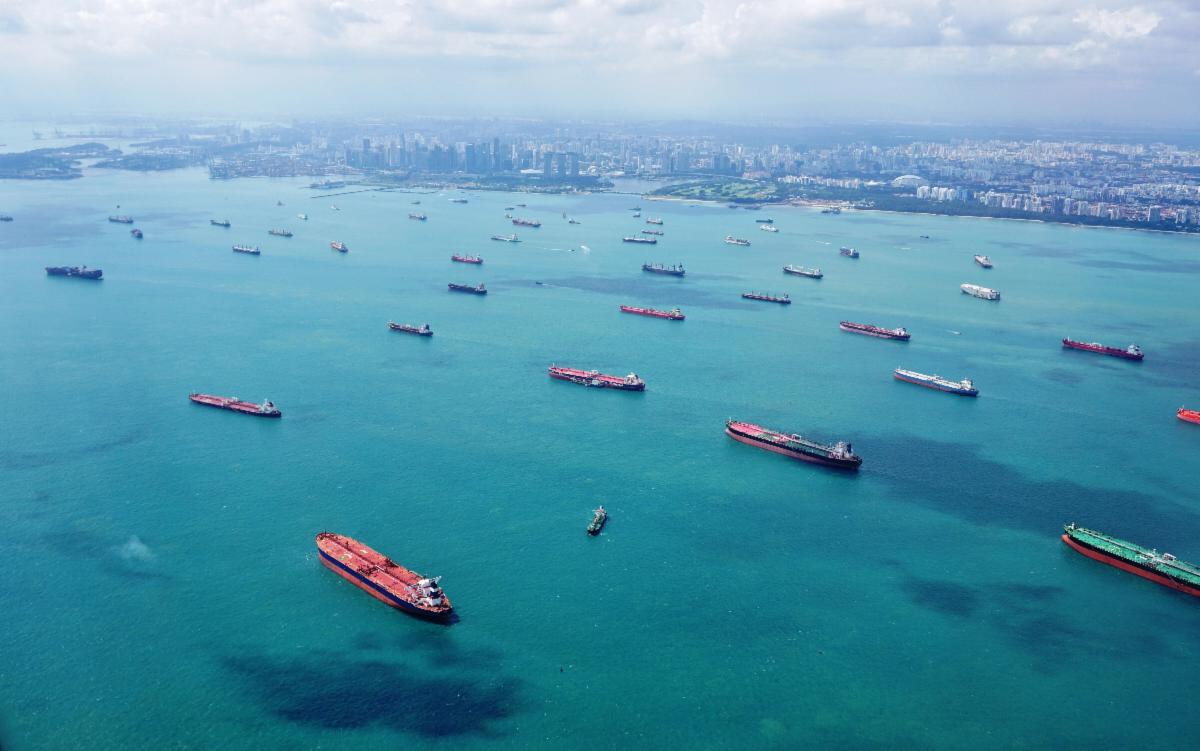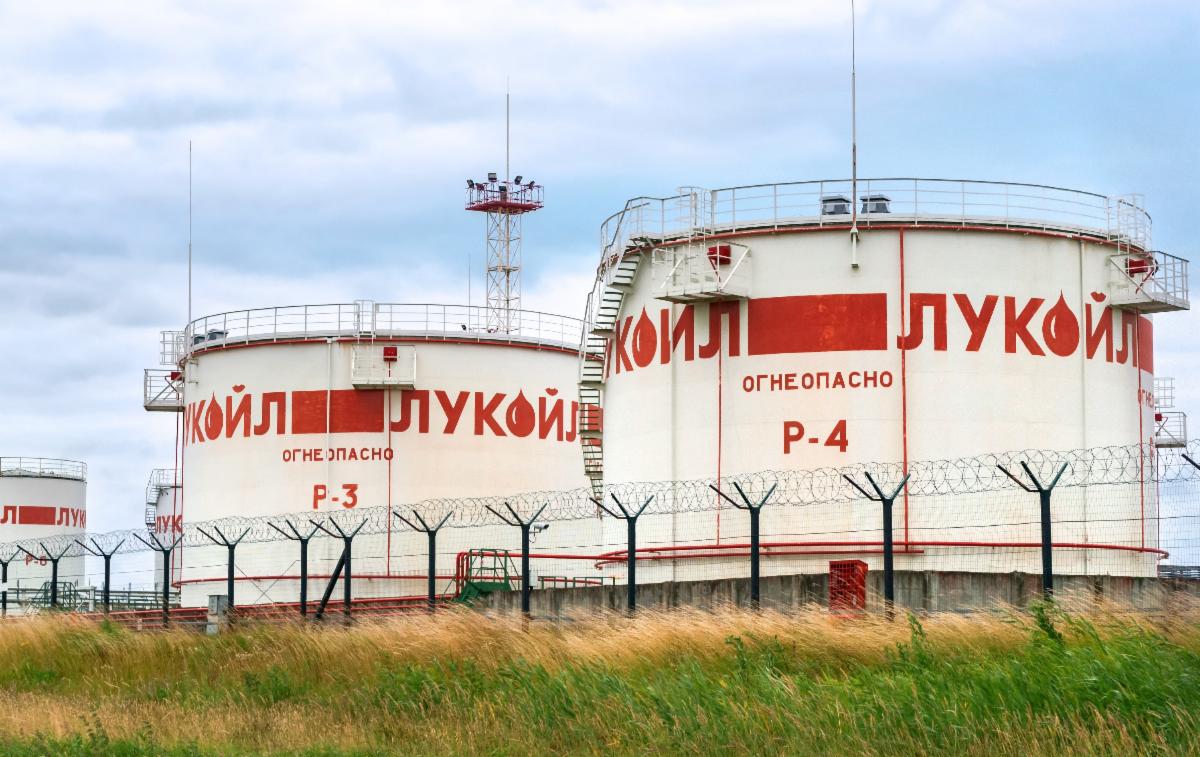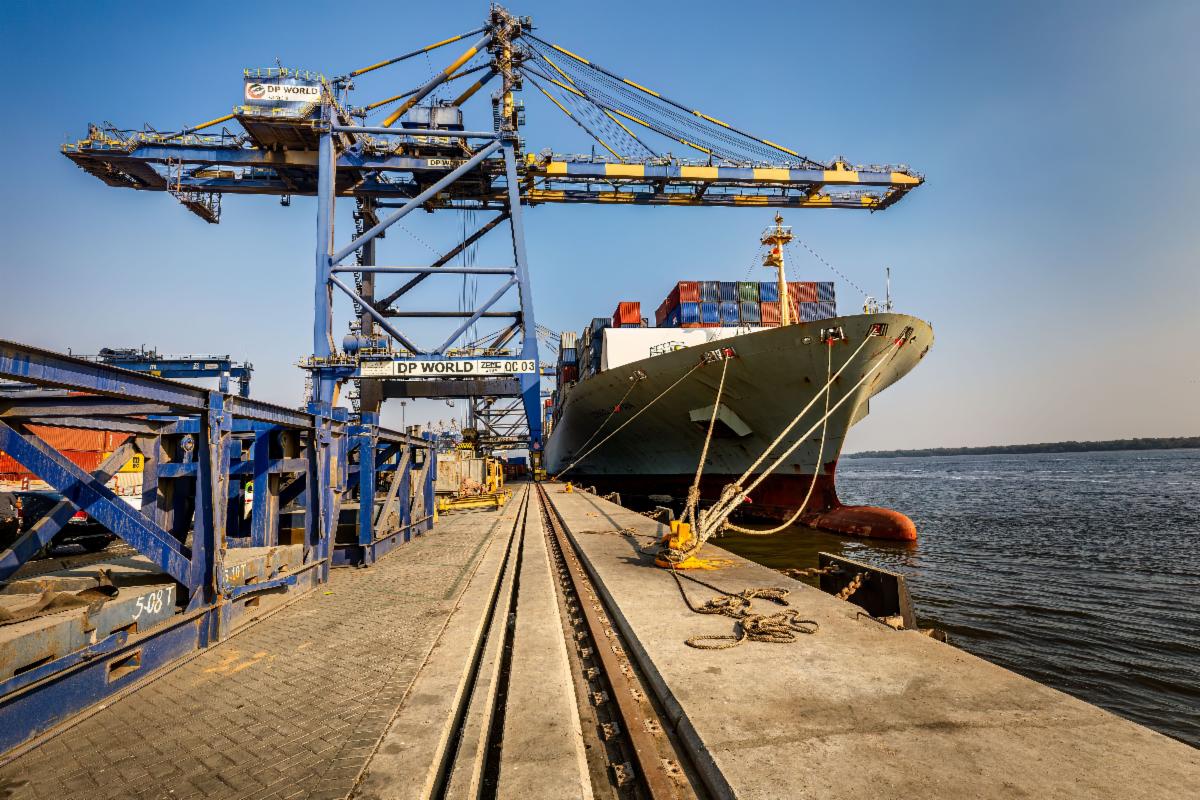Russian Energy Update – June 29, 2023
Russian Energy Update – June 29, 2023
Want to receive future energy updates? Subscribe here.

China, India, and Singapore increase oversight of oil tankers possibly connected to Russian “Shadow Fleet”
Singapore has detained a record thirty-three docking vessels in 2023 for safety failures, with nine ship detentions in April alone. The country—along a key transit route between east and southeast Asia and south Asia, the Middle East, and Europe—has withheld more vessels this year than the entirety of 2009-2019. Meanwhile, maritime authorities in China’s Shandong province have reportedly started closely scrutinizing aging oil tankers operating there. The province is home to a substantial portion of China’s refining capacity and is a major oil import hub.
Why it matters: Many of the estimated four hundred ships facilitating the shipping of Russian oil exceed industry standard retirement ages and have undergone recent ownership changes to companies that rapidly emerged following Russia’s invasion of Ukraine. Industry experts have warned that the so-called shadow fleet poses an elevated risk of a disastrous oil spill due not only to the age of the vessels, but also their uncertain insurance and other factors. An Indian shipping firm recently lost Western insurance after failing to disclose oil trades above the G7-EU oil price cap.
In 2015-16, Russia was successful in assembling a small fleet of aging cargo ships to supplement inadequate military logistics capabilities in supplying its forces in Syria. The “Syrian Express,” as it was known, may in some ways have become a template for Russia’s current effort to avoid triggering the G7-EU price cap by arranging alternative shipping and insurance. Yet Russian oil export volumes far exceed the supply requirements of Russia’s limited Syria contingent, the tankers involved cover longer and more varied routes, and the cargo—flammable liquids—poses challenges quite different from moving arms or other operational necessities. Finally, the ships involved are dispersed among many murky firms rather than under military command. Using the decentralized “shadow fleet” over an extended period appears to pose greater risks, which some governments appear to increasingly recognize. A major oil spill, should one occur, could significantly disrupt Russia’s ad hoc export arrangements.

Russia’s Lukoil experiments with enhanced oil recovery, touts carbon capture
One June 21, Russian business newspaper Kommersant reported Lukoil is exploring how EOR and CCUS technologies could help the company increase its oil production while cutting its carbon emissions. The company intends to reduce its carbon emissions by 20% by 2030 from 2017 levels. Lukoil believes it can use enhanced oil recovery to maximize oil production from hard-to-recover reserves.The firm is also exploring using sequestered carbon to produce steel.
Why it matters: Russia has not set ambitious CO2 reduction targets; indeed, some of its formal strategic documents have identified “development of ‘green technology’” as a challenge or even a threat to Russia’s economic security due to their disruption of global energy markets.
While referring to the possible emissions-reduction benefits of CCUS, Kommersant’s report seems overwhelmingly to focus on enhanced oil recovery, a technique for expanding oil extraction from existing wells by injecting CO2 to increase pressure and reduce viscosity of oil deposits. The article repeatedly refers to small-scale successes in boosting output. At a time when U.S. and Western governments are seeking to constrain Russia’s oil sector with limits on Western investment and technology, it is notable that one of the country’s leading business newspapers devoted considerable space—including explanatory diagrams—to demonstrating that a top Russian oil firm is developing technologies to lift output. That said, the text acknowledges that absent Russian domestic policies to penalize companies that are not working to limit their emissions, it will be cheaper to drill new oil wells in Russia than to use EOR.

China imports of Russian nickel soar to capitalize on battery boom
On June 20, customs data revealed Chinese refined nickel imports tripled in May thanks in part to increased supplies from Russia. The uptick came after lengthy contract negotiations between Russian suppliers and Chinese buyers, and a 50% year-over-year decrease in Russian shipments between January and April. After supplying a total of 4,691 metric tons of nickel during the four-month period, Russian nickel exports to China jumped to 7,026 metrics tons in May.
Why it matters: Growing Chinese-Russian battery mineral supply chains could complicate the Biden Administration’s efforts to establish clean-energy supply chains and limit U.S. and allies’ import dependencies from geopolitical rivals.
Russia produces an estimated 17% of global demand for class 1 nickel, a key component of cathodes in lithium-ion batteries in EVs and energy storage. Nickel comprises 60-90% of some cathodes and became more popular recently as battery developers curtailed the use of cobalt due to the mineral’s prices skyrocketing to four-year highs on the London Metals Exchange last year. The emergence of lithium iron phosphate batteries, which do not contain nickel, might also be advantageous to Russia as the world’s fourth largest producer of phosphate.
China and Russia’s leading roles as critical minerals processor and producers, respectively, could impact EV automakers capacity to access U.S. IRA tax credits. Starting in 2025, U.S. Treasury Department guidelines stipulate tax credit eligible EVs cannot contain critical minerals “extracted, processed, or recycled by a foreign entity of concern.” While the U.S. has not specified whether foreign entities will be countries or individual firms, it’s plausible companies using critical minerals from China or Russia may bar them from IRA tax credits. The rule could slow the EV sector’s growth in the U.S and undercut its clean energy goals, while forcing foreign companies to pick between the U.S. and its competitors. Many U.S. trade partners rely on the two nations in one way or another. A recent EIRP-Korea Foundation seminar reviewed U.S.-Korea cooperation and competition in the sector.

Pakistan receives “first-ever” shipment of Russian oil
One June 11, Pakistan’s Prime Minister Shehbaz Sharif said the country received its “first-ever” shipment of Russian oil. The shipment contained 330,000 barrels of crude, while a second shipment of 55,000 barrels arrived on June 27. Pakistan paid for the deal with Yuan, although the deal’s financial terms remain undisclosed. In April, Pakistan’s State Minister for Petroleum said Pakistan could import up to 100,000 bpd from Russia if the purchases proceed smoothly. He added that the country’s goal was to import one-third of its crude oil from Russia, and believed the discounted rates for Russian oil would reduce Pakistan’s fuel prices.
Why it matters: Russia is further expanding its markets in South Asia after becoming India’s largest oil provider and exporting oil to debt-stricken Sri Lanka last autumn. Like Sri Lanka, Pakistan is facing an economic crisis from record levels of inflation, dwindling foreign currency reserves, and a dispute over a withheld loan package from the IMF. Discounted Russian crude may prove an appealing alternative for economically encumbered states, eroding market shares of major oil producers in the Middle East and the United States.
Pakistan imported 154,000 bpd from all sources in 2022, so if the country chooses to import 100,000 bpd from Russia, it will likely come at the expense of its current major suppliers, Saudi Arabia and the UAE. Based on 2021 data, the two countries comprised 88% of Pakistan’s crude imports at a combined value of $3.2 billion. A larger switch to cheaper Russian crude could prove financially attractive to Pakistan long-term.
Nevertheless, it’s uncertain how much Pakistan and Russia’s energy ties can realistically grow. Russia is increasingly using the Yuan to avoid Western sanctions restricting its ability to use the dollar to make foreign trade transactions along with Russia’s exclusion from the SWIFT payment system. Pakistan’s foreign currency crisis casts doubt how long it can facilitate Yuan payments. The two countries’ trade deal also does not include refined oil products. Pakistan has limited refining capacity and imported $6.5 billion of refined oil products from the Middle East and China in 2021 and is Pakistan’s number one import.
